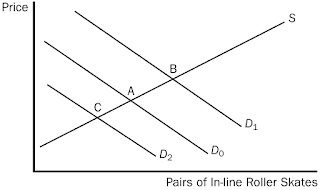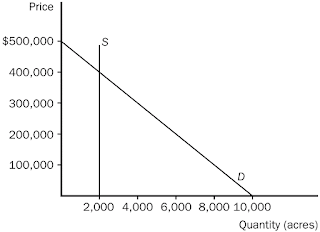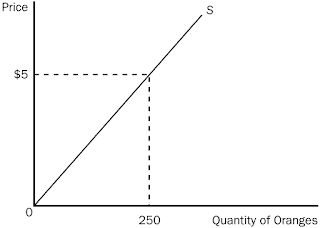
1. The commercial
jetliner industry, consisting of Boeing and Airbus, represents
a. perfect competition.
b. oligopoly.
c. monopoly.
d. None of the above are correct.
2. In a perfectly
competitive market,
a. advertising is widely used to influence demand and price.
b. firms are price takers rather than price makers.
c. firms produce a small number of differentiated products.
d. a small number of firms produce an identical product.
3. Suppose that a large
dairy farmer is able to raise the market price of milk by withholding milk
supply from the market. In this instance,
a. the milk market is perfectly competitive.
b. buyers will decrease their demand for milk.
c. buyers will increase their demand for milk.
d. the milk market is imperfectly competitive.
4. A group of buyers
and sellers with the potential to trade is known as a(n)
a. cartel.
b. market.
c. industry.
d. sector.
5. The amount of a
good or service that buyers would be willing and able to purchase at a specific
price is known as
a. quantity demanded.
b. demand.
c. supply.
d. quantity supplied.
6. The demand curve
for Beanie Baby dolls shows the quantity of dolls demanded
a. by suppliers of those dolls.
b. at the equilibrium price for Beanie Baby dolls.
c. at each level of income.
d. at each possible price of Beanie Baby dolls.
7. This diagram shows
the market for in-line roller skates. Which of the following would cause a move
from point A to point B?
a. an increase in the price of bicycles
b. a decrease in the price of bicycles
c. a decrease in consumer incomes
d. a popular new movie that convinces teens that skateboards
are really cool

8. This diagram shows
the market for in-line roller skates. Which of the following would cause a move
from point A to point C?
a. an increase in the price of bicycles
b. a decrease in the price of bicycles
c. a decrease in the price of in-line roller skates
d. a decrease in consumer incomes
9. Which of the
following are the best examples of substitute goods?
a. personal computers and computer software programs
b. milk and cookies
c. IBM and Gateway personal computers
d. hot dogs and mustard
10. Which of the
following sets of goods are most likely to be complementary goods?
a. shoes and pizza
b. automobiles and computers
c. baseballs and baseball gloves
d. football tickets and baseball tickets
11. The diagram below
shows the supply of oranges per week provided by Farmer Jones. When the price
increases from $1.00 per pound to $2.00 per pound, the quantity supplied
increases to
a. 50.
b. 100.
c. 150.
d. 500.
a. decrease in the quantity supplied of whole milk.
b. increase in the supply of whole milk.
c. decrease in the supply of skim milk.
d. increase in the supply of skim milk.
13. An increase in
the number of tomato producers will
a. increase market supply because the price of tomatoes will
rise.
b. increase market supply because market demand will
increase as more tomatoes are produced.
c. increase market supply because market supply is the sum
of all the individual tomato producers’ supply curves.
d. increase market demand but leave market supply unchanged.
14. Consider the
diagram below in equilibrium at point E. Firms who advertise in this market are
attempting to shift the
a. supply curve to S2.
b. supply curve to S3.
c. demand curve to D2.
d. demand curve to D3.
15. Suppose that the
demand for apples increased more than the supply of apples increased. The net
effect of these two changes would be a(n)
a. increase in the equilibrium price and a decrease in the
equilibrium quantity.
b. increase in the equilibrium price and an increase in the
equilibrium quantity.
c. decrease in the equilibrium price and an increase in the
equilibrium quantity.
d. decrease in the equilibrium price and a decrease in the
equilibrium quantity.
16. Given this data,
the equilibrium price and quantity of CD players are
a. $150 and 300 players.
b. $200 and 800 players.
c. $250 and 600 players.
d. $300 and 650 players.
17. Given this data,
if the price of CD players is $200,
a. there will be a surplus.
b. there will be a shortage.
c. the market is in equilibrium.
d. the supply will increase.
18. Temporary
shortages in a market are eliminated by
a. decreases in the price, which cause quantity supplied to
fall and quantity demanded to rise.
b. decreases in the price, which cause quantity supplied to
rise and quantity demanded to fall.
c. increases in the price, which cause quantity supplied to
fall and quantity demanded to rise.
d. increases in the price, which cause quantity supplied to
rise and quantity demanded to fall.
19. When a market is
in equilibrium,
a. quantity demanded will equal quantity supplied.
b. a shortage will be present.
c. a surplus will be present.
d. sellers will continue to expand production to increase
revenues.
20. If a drought
destroyed half of the U.S. garlic crop at a time when the health benefits of
garlic were being well publicized, economists would expect that in the market
for garlic
a. quantity exchanged would rise but the change in price is
uncertain without further information.
b. price would rise but the change in quantity exchanged is
uncertain without further information.
c. both price and quantity exchanged would rise.
d. price would rise and quantity exchanged would fall.
21. The discovery of
new gold in South America will __________ the price of gold and __________ the
quantity of gold traded.
a. raise; raise
b. lower; raise
c. raise; lower
d. lower; lower
22. Higher wages in
the U.S. auto industry would __________ the prices of autos and __________ the
quantity exchanged.
a. lower; lower
b. lower; raise
c. raise; lower
d. raise; raise
23. In this diagram
of the market for beachfront property in Connecticut, the equilibrium price is
a. $100,000 per acre.
b. $200,000 per acre.
c. $300,000 per acre.
d. $400,000 per acre.

24. Consider this
diagram of the market for beachfront property in Connecticut. If the local
government decides to establish a price of $200,000 per acre there will be
b. a surplus of land.
c. an equilibrium quantity of land exchanged.
d. no land exchanged in the market.
25. Consider this
diagram of the market for beachfront property in Connecticut. At a price of
zero,
a. 500 acres will be demanded.
b. 1000 acres will be demanded.
c. 10,000 acres will be demanded.
d. an infinite number of acres will be demanded.


No comments